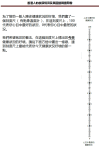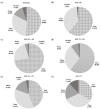A Comprehensive Community-Based Prevalence Study on Nocturia in Hong Kong Male Adults
- PMID: 34501700
- PMCID: PMC8431019
- DOI: 10.3390/ijerph18179112
A Comprehensive Community-Based Prevalence Study on Nocturia in Hong Kong Male Adults
Abstract
Background: Most prevalence surveys on nocturia have focused on older populations. This study aimed to measure the nocturia prevalence across the full spectrum of male adults living in Hong Kong, where severity and associated quality-of-life (QoL) were also explored.
Methods: A cross-sectional population-based survey was conducted in men aged 18 or above using the ICIQ-NQoL Questionnaire.
Results: With 1239 respondents at age ranged 18-99, the overall nocturia prevalences were found to be 63.0% (ranged 41.6-84.6% at different age groups) and 31.2% (ranged 13.0-56.3% at different age groups), for ≥1 and ≥2 bedtime voiding episodes, respectively. The chance of nocturia was dramatically increased at age 60 or above while both prevalence and voiding frequency were increased with advancing age. About 83% of the nocturia men experienced one to two voiding episodes per night, but many of them had self-rated their QoL poor or very poor and indicated moderate-to-high bothersome. Younger men at age 18-39 were found to have high prevalence as 41.6% and almost 30% of them rated poor or very poor QoL.
Conclusions: Nocturia was not only affecting the older populations but also caused significant bothersome and negative impacts on QoL in younger males.
Keywords: NQoL; bedtime urination; lower urinary tract symptoms; male adults; nocturia; quality of life; urinary frequency.
Conflict of interest statement
The authors declare no conflict of interest.
Figures





Similar articles
-
Predictive Values of Nocturia and Its Voiding Frequency on the Aging Males' Symptoms.Int J Environ Res Public Health. 2022 Sep 15;19(18):11632. doi: 10.3390/ijerph191811632. Int J Environ Res Public Health. 2022. PMID: 36141927 Free PMC article.
-
Patient opinion of lower urinary tract symptoms and their treatment: a cross-sectional survey in Hong Kong public urology clinics.Hong Kong Med J. 2017 Dec;23(6):562-9. doi: 10.12809/hkmj166102. Epub 2017 Oct 13. Hong Kong Med J. 2017. PMID: 29026056
-
Prevalence, risk factors, and symptom bother of nocturia: a population-based survey in China.World J Urol. 2015 May;33(5):677-83. doi: 10.1007/s00345-014-1411-5. Epub 2014 Sep 26. World J Urol. 2015. PMID: 25257983
-
Nocturia: A Highly Prevalent Disorder With Multifaceted Consequences.Urology. 2019 Nov;133S:3-13. doi: 10.1016/j.urology.2019.07.005. Epub 2019 Jul 13. Urology. 2019. PMID: 31310770 Review.
-
The effect of nocturia on sleep.Sleep Med Rev. 2011 Apr;15(2):91-7. doi: 10.1016/j.smrv.2010.03.002. Epub 2010 Jun 8. Sleep Med Rev. 2011. PMID: 20965130 Free PMC article. Review.
Cited by
-
Predictive Values of Nocturia and Its Voiding Frequency on the Aging Males' Symptoms.Int J Environ Res Public Health. 2022 Sep 15;19(18):11632. doi: 10.3390/ijerph191811632. Int J Environ Res Public Health. 2022. PMID: 36141927 Free PMC article.
References
-
- van Kerrebroeck P., Abrams P., Chaikin D., Donovan J., Fonda D., Jackson S., Jennum P., Johnson T., Lose G., Mattiasson A., et al. Standardisation Sub-committee of the International Continence Society. The standardisation of terminology in nocturia: Report from the Standardisation Sub-committee of the International Continence Society. Neurourol. Urodyn. 2002;21:179–183. doi: 10.1002/nau.10053. - DOI - PubMed
Publication types
MeSH terms
LinkOut - more resources
Full Text Sources

